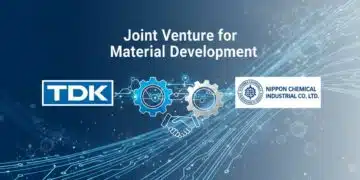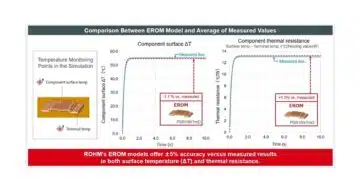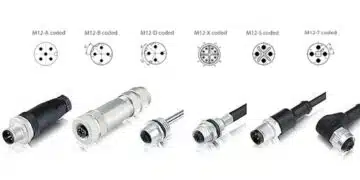This article is essentially a summary of 18 publications of Dr. V. Azbel, Independent consultant on tantalum capacitors, in the field of enhancement of tantalum capacitors reliability.
Introduction
Modern methods of manufacturing tantalum capacitors require meticulous control at every stage of the technological process to ensure their reliability and longevity.
This article presents a new approach to structural control, proposed as an addition to existing methods, similar to the F-Tech technology. This approach significantly enhances the reliability of anodes by minimizing the risk of leakage current (DCL) failures. Notably, this approach is the first to utilize stress-strain curve characteristics specifically for controlling the technological process in tantalum capacitor production, a method previously unutilized in this context.
Methodology
Structural Control Sintered Pellet and Anode at Each Production Stage
A key aspect of the approach is the application of stress-strain curve characteristics to monitor particle distribution in the powder and the internal stresses. This method is widely used in powder metallurgy to assess powder quality and process stability by controlling the mechanical properties of the sintered pellet [1].
This confirms its effectiveness and potential for improving processes in the production of tantalum capacitors. Structural control permits minimizing defects and the risk of internal stresses arising during sintering and passivation, ensuring the stability and quality of the sintered pellet before formation [2],[3].
Assessment of Anode Aging Propensity
To evaluate the aging propensity of anodes, we propose a materials science-based approach, utilizing the difference in mechanical characteristics before and after temperature exposure. For the anode, this involves 450°C in air. This method predicts the durability and reliability of anodes under operational conditions, which is crucial for ensuring the stable performance of capacitors over time and has been experimentally confirmed [3].
Using the Anode Calculation Program for New Designs
In manufacturing an anode for a new design, we use our developed anode calculation program. This program allows the selection of optimal technological parameters for the anode given the capacitor design, ensuring the final product meets the required specifications [4].
Advantages of the Proposed Approach for Deoxidation Process Control
The proposed approach offers significant advantages for controlling the deoxidation process of tantalum-sintered pellets. According to the article ” Optimizing the Deoxidation Process of Tantalum Powders to Improve Electrical Performance of Anodes,” [5] effective deoxidation is crucial for achieving balanced microstructures and minimizing internal stresses.
By applying stress-strain curve analysis, we can accurately monitor and control the structural changes occurring during deoxidation. This method provides a more precise assessment of the internal stresses and structural integrity of the anode compared to traditional methods. Consequently, this leads to enhanced reliability and performance of the final product. Furthermore, the approach allows for real-time adjustments during the deoxidation process, ensuring consistent quality and reducing the risk of defects that could compromise the capacitor’s reliability.
Results and Discussion
Implementing the proposed structural control approach at each production stage significantly minimized internal stresses, thereby improving the quality and reliability of anodes [6].
The assessment of anode aging propensity showed that anodes produced by our method possess high stability and reliability. The anode calculation program effectively selected optimal parameters for various capacitor designs. This approach has received experimental confirmation in a series of my works [7].
Conclusion
The presented new approach to structural control, proposed as an addition to existing methods, significantly improves the quality and reliability of tantalum capacitors. Structural control at each production stage, assessing anode aging propensity, and using the anode calculation program ensure high product stability and longevity. This method can benefit manufacturers aiming to enhance their capacitors’ performance and reduce failure risks.
Reference
- J. KOVACIK Correlation between Young’s modulus and porosity in porous materials Journal of Materials Science letter s 18 (1999) 1007-1010
- V. Azbel Quality control sinter pellet an anode, Ta- capacitor, by Mechanical testing https://www.linkedin.com/pulse/quality-control-sinter-pellet-anode-ta-capacitor-mechanical-azbel/ and https://passive-components.eu/ensuring-quality-in-tantalum-capacitor-production-the-critical-role-of-anode-mechanical-screening/
- V. Azbel Tantalum Capacitors Reliability, Leakage Current Stability Prediction and Cost Reduction by Anode Characterization During Manufacturing Process; Vladimir Azbel; 3rd PCNS Passive Components Networking Symposium SEPTEMBER 2021, MILANO, ITALY; https://passive-components.eu/modelling-of-anode-overheating-risks-during-the-manufacture-of-tantalum-capacitors/
- V. Azbel Modeling of Anode Overheating Risks During the Manufacture of Tantalum Capacitors 2023 BLOG PASSIVE COMPONENTS 2024 https://passive-components.eu/modelling-of-anode-overheating-risks-during-the-manufacture-of-tantalum-capacitors/
- V. Azbel Optimizing the Deoxidation Process of Tantalum Powders to Improve Electrical Performance of Anodes https://www.linkedin.com/in/vladimir-azbel-319769106/recent-activity/all/2024 and https://passive-components.eu/optimizing-the-deoxidation-process-of-tantalum-powders-to-improve-electrical-performance-of-anodes/
- V. Azbel Innovative Quality Control to Improve the Reliability of Tantalum Capacitors BLOG PASSIVE COMPONENTS 2024, https://passive-components.eu/innovative-quality-control-to-improve-the-reliability-of-tantalum-capacitors/
- https://passive-components.eu/?s=Vladimir+Azbel
































